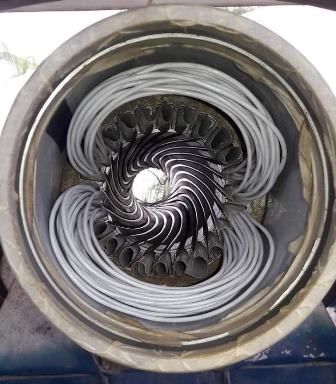Dear all,
It is well known the skewed rotor bars in induction motors are used for avoiding CUSP, cogging and noise in three-phase induction motors. However, there is also the possibility of skewed slots in the stator. One of my collegues came to me looking for explantions of skewd slots in a 4160 V 5 MVA 4 Pole Synchronous AC Generator.
Does anyone knows for what were intended such skewed slots (all 60 slots are skewed)in the stator?
Thanks and Happy holidays!!
Petronila
It is well known the skewed rotor bars in induction motors are used for avoiding CUSP, cogging and noise in three-phase induction motors. However, there is also the possibility of skewed slots in the stator. One of my collegues came to me looking for explantions of skewd slots in a 4160 V 5 MVA 4 Pole Synchronous AC Generator.
Does anyone knows for what were intended such skewed slots (all 60 slots are skewed)in the stator?
Thanks and Happy holidays!!
Petronila



